DVO Diamond Fork
(discontinued)
| Where To Buy | |||
|---|---|---|---|
Free shipping on orders over $50 (continental U.S. only).
International shipping available. Some exclusions apply. |
Free shipping on orders over $50 (continental U.S. only).
International shipping available. Some exclusions apply. $699.94
|
||
Free shipping on orders over $50 (continental U.S. only).
International shipping available. Some exclusions apply. |
|||
Review by Brandon Turman // Photos by Brandon Turman and Dave Trumpore
We caught a glimpse of DVO Suspension’s Diamond fork nearly two years ago in prototype form. Since that time the company has been tweaking and tuning their first single crown fork, and they’ve been very open about the entire development process. For those biding their time, the wait is over and the fork is now available.

Like the Emerald DH fork that came before it, the Diamond makes use of DVO’s Off The Top (OTT) external negative spring adjustment and has an easily removable and tunable compression loader. The Diamond does have a few new tricks of its own, though, like a unique compression bladder cartridge system said to offer better and more reliable performance than a traditional expanding bladder.
With several big suspension players now at the top of their game, does the Diamond perform well enough to stand out from the crowd? We spent time on both a pre-production sample and a production model to find out. Following over three months of use, this review and rating has been updated to include our long term impressions.

DVO Diamond Fork Highlights
- Made for Trail/All-Mountain/Enduro
- 27.5-inch (44mm offset) model with 160mm travel (internally adjustable to 150/140mm)
- 29-inch (51mm offset) model with 150mm travel (internally adjustable to 160/140/130mm)
- Adjustments: High-speed compression (29-clicks), low-speed compression (6-clicks), rebound (20-clicks), OTT coil negative spring (14 turns), and air spring (90-170psi)
- Cartridge style air spring and damper
- Quick access to compression shim stack via top loader assembly
- High flow compression port
- 35mm tapered 7,000 series alloy stanchions with hard anodized black coating
- Forged CNC hollow crown
- Cast magnesium lowers
- Includes mud fender and two 10mm spacers for travel reduction
- 160mm post mount disc brake tabs, 200mm max rotor size
- QR15 tapered thru-axle
- Tapered steerer only
- Black or green color options
- Weight: 4.6-pounds (2.1kg) for 27.5-inch model
- MSRP: $999
As with all DVO components, durability, reliability, and user serviceability were key design considerations. DVO says they’re putting money in at the factory so the fork will require less service later on, and they’ve used high quality parts to help achieve that goal.

Dual Cartridge System
Similar to many motocross forks, the Diamond uses a sealed cartridge system on both the damper and air spring sides. If your fork needs attention, rather than shipping the complete fork back and forth you can simply ship the cartridge, saving on shipping costs and hassle. The DVO cartridge design has some minor drawbacks, though, including about 100g of added weight. While most forks utilize the inner stanchion wall as a sealing surface, the Diamond requires an extra tube (the cartridge housing) inside the fork that houses the damper and air spring. DVO says they’ve focused attention on other areas to make up for the weight gain.

Compression Bladder
On the damper side DVO uses a bladder system. Unlike other forks where the bladder is filled with oil and expands as the fork cycles, the Diamond has air inside the bladder and oil on the outside that compresses the bladder rather than expanding it. This is similar to the DVO Jade rear shock. DVO chose to go this route to combat a few negatives of cartridge bladder systems, including loss of elasticity of the bladder over time. They also claim it improves initial sensitivity. During assembly or maintenance, the bladder is filled with air at atmospheric pressure then sealed to keep oil out. A high pressure dynamic quad lip oil seal helps in this regard. The cartridge is filled with oil using a syringe via the cartridge bleed port at the top of the fork, keeping air and oil separated. As the damper is compressed the bladder exerts pressure on the oil, aiding in cavitation prevention.

DVO says the compression piston is quite large compared to other forks, allowing more oil flow and less choke during big hits. The shim stack has a greater impact on the damping curve, and can be custom tuned by removing the top loader assembly.

External damper adjustments include independent high-speed compression, low-speed compression, and rebound. Low-speed compression is adjustable using a 6-position dial that’s easy to read at a glance, providing a quick way to gain a more stable platform for hard pedaling efforts or a change in terrain.
Air Spring and OTT Adjustment
On the air spring side, our initial pre-production test fork was set up exactly how Cedric Gracia asked for it - with a very supportive mid-stroke and ramp at the end for bottom out support. Production forks are just slightly more linear thanks to increased air spring volume, though hard charging riders can tune the ramp at the end stroke by adding a few cc’s of oil to the air spring. Alternatively, the fork can be aired up higher than normal and the OTT negative spring adjustment can be cranked in to create a supple ride while providing ample support when the going gets rough. The Diamond uses comparatively high air pressures in an effort to combat hysteresis and improve response time.

At the bottom of the air spring side you’ll find the OTT adjustment, which is essentially a preload mechanism on the coil negative spring. Changing this adjustment impacts the initial sensitivity of the fork, ride height, and sag point. Unlike traditional coil negative springs that are ideal for a small range of rider weights, DVO’s system accommodates those from 90 to 360-pounds. Air negative springs that auto set are a different story, however, and are more common in the trail and Enduro realm than in downhill. Still, the ability to easily adjust the negative spring is unique and brings an additional level of tuning not found in other forks.
Chassis Design
Chassis wise, you’re looking at a tapered steerer, forged CNC hollow crown, 35mm stanchions, and magnesium lowers casted by SR Suntour. The lowers have a visible external taper from the lower bushing down to help prevent excessive flex and binding. The micro-adjustable QR15 axle is tapered in the center to reduce weight and doesn’t require the use of tools. DVO includes a custom fender with the fork, which mounts using small bolts at the back of the arch.

As with all suspension components, friction is an enemy that needs to be dealt with carefully. Alignment and concentricity of the bushings is a major key to reducing friction, so DVO uses a custom tool to ensure everything is perfectly aligned. During assembly the uppers must slide into the lowers under their own weight or the fork is rejected. 25cc of bath oil in each fork leg help lubricate things, and DVO-designed single lip seals infused with molybdenum disulfide keep seal drag to a minimum. The use of a dyno at end of the assembly process ensures air spring and damping curves match specifications.
Initial Impressions
Our first test of the pre-production Diamond was performed using a 2014 Intense Tracer 275 Carbon, a 160mm travel all-mountain bike with a 66.5-degree head angle. We later mounted a production model to a 2015 Santa Cruz Bronson, a 150mm travel bike with a 67-degree head angle. Both bikes utilized the 160mm 27.5 Diamond fork.
We started things off at DVO's recommended settings based on our 175-pound rider weight, yielding close to 20% sag while standing. Suggested settings for the production model are as follows:
- Rider Weight Range: 160 to 179-pounds
- Air Pressure: 110-125psi
- OTT: 3-7 rotations from open
- Rebound: 8-12 clicks from open
- HS Compression: 2-3 clicks from open
- LS Compression: 1-2 clicks from open
Previously we remarked that the pre-production model was a hair stickier in the first few inches than a RockShox Pike (which is to say very little, but some). That has been addressed with the production model thanks to improved bushing alignment procedures, and the replacement of an internal o-ring with a new x-seal that reduces friction. The end result is a fork that feels remarkably smooth out of the box when cycling it by hand.

Installation of both forks went smoothly with no hiccups. We were impressed by the easy to use axle design, which allows you to rotate the lock nut quickly to get the perfect angle when the lever is closed.
Experimenting with the compression and rebound settings showed that they both have a very usable range, and should accommodate riders of all sizes. The feel remained smooth when placing the front wheel against a large object and twisting the bars while compressing the fork, which is an instance when many other forks bind under the torsional load.
On The Trail
Test locations included Whistler, Sedona, San Diego, and Grand Junction, providing a wide range of terrain, trail styles, and dirt conditions. From rough and rowdy steeps to technical rock sections, high-speeds, big jumps, tight berms, relentless brake bumps, and flow trails, the Diamond saw it all. We even rode it on several trails typically reserved for big bike duties.

The Diamond suits aggressive riders very well. We used full travel when needed, but it never felt divey or rode low in the travel. There was almost always something in reserve, and even when it bottomed the fork didn’t feel overly harsh or make any alarming noises. DVO’s change to more linear air spring in the production fork suits general trail users better, allowing them to routinely use a little more travel to smooth out the trail, but the ability to increase the ramp near bottom out is a welcome option for aggressive riders on rougher terrain. At Whistler, the added ramp was greatly appreciated. The production air spring volume provides a more gentle ramp, but still prevents harsh bottom outs in most situations.
The OTT setting makes a noticeable difference in the first two inches of travel, and can have a big affect on front end traction and feedback from the ground. Beyond that, the air pressure setting largely dictates how the fork rides. We ended up at a slightly higher pressure than recommended (by ~5psi) with a bit more OTT. This made for a ride that was able to soak up the biggest hits while remaining supple. With the OTT cranked in, the fork flutters over successive small bumps with ease and traction is readily available. Arm pump and hand fatigue very rarely happen, even after a long day of shuttling or lift assisted laps. The only instance chatter is truly noticeable is on severely brake bumped sections of fast fire road.

Is the adjustable OTT setting better than a traditional air negative spring? We think so, provided you don’t overdo it. Increasing OTT too far has the potential to cause the fork to suck itself into the travel a bit and gain a slight mid-stroke wallow, so DVO suggests certain ranges dependent on the air spring pressure you’ve chosen. Within that range the fork can go from a firm, precise initial feel that’s suited well for slalom-like jump trails where a bit of pop is preferable to something that requires very little pressure at the bars to initiate the compression. The latter setting will save your hands over a long, bumpy run. We spent most of our time at the softer end of the spectrum, enjoying the more sensitive feel and readily available traction for most trail use. Set up this way the fork has a smooth, plush feel initially, but not so much that it loses that sense of control that a well-damped fork offers. We'd rate it a bit smoother feeling than the new 2016 Fox Float 34, and right in line with the RockShox Pike.
Damping wise, the quick low-speed adjustment is useful and effective, adding support and fine-tuning ride height when needed. When wide open the base level damping and support from the air spring works well on flatter trails, allowing the fork to act a bit more freely. Fully closed the fork is much firmer, but not a super sticky platform way like some other forks. We found ourselves near the middle 2-3 click range most often, which provided a great all-around feel with a good compromise of sensitivity, something to push against, and support when mashing on the pedals out of the saddle.
With 29 clicks of high-speed compression you can really dial in the feel on faster portions of trail. Even with the high-speed compression setting turned all the way in, the fork was smooth and consistent with no spiking, and input to the hands never felt overly harsh, though you do get a better sense of the terrain you're smashing through. DVO seems to have tuned it to a more usable range for average weight riders. Want more bottom out support without adding air pressure or oil to the air spring? Want more pop on big jump faces? Just crank the high-speed in a few clicks. If the range isn't perfectly suited to your weight or riding style and you find yourself at one of the extremes, it's possible to tweak the loader assembly pretty easily, and DVO is willing to help with the process.

The chassis felt perfectly adequate when navigating rough sections or smashing tight turns, never surprising us with an unexpected twist or bind. On occasion we felt as though the fork would spit us out a little sideways on large impacts that used full travel, however, especially on off-camber landings.
With a wide range of adjustments and the addition of OTT, there are many, many ways to set up the fork, which really is the beauty of it. After experimenting with higher/lower pressures, more/less OTT, and the full range of damping adjustments, our preferred setup is as follows on everything but the most rowdy trails. It's slightly higher pressure, slightly more OTT, and slightly more compression than the stock settings.
- Rider Weight: 175-pounds
- Air Pressure: 130psi
- OTT: 7 rotations from open
- Rebound: 12 clicks from open
- HS Compression: 4-5 clicks from open
- LS Compression: 2-3 clicks from open
For those days when we want to smash stuff at the bike park we'll add ~4psi and crank in the OTT 2-3 more turns to give more bottom out support while maintaining a comparable initial feel. DVO provides riders with several helpful tuning guides on their website to get the most out of the fork.
Things That Could Be Improved
Some of the finer details on the pre-production sample were in need of minor updates, which we initially docked the fork a half star for. We found that the low-speed compression adjustment was too easy to turn, and the OTT setting was too difficult to turn when the fork was aired up. Both of these have been addressed in the production model, in addition to reducing friction in the system.
Our production fork did have a few minor issues, however. The paint on the crown chipped quite easily, so take care during installation and when swapping headset races. Also, the high-speed compression adjuster detents are almost indistinguishable at one end of the adjustment range.

Additional quibbles include the OTT adjustment requiring the use of an allen key. Some riders won’t touch it often, but for the tinkerers among us it’s a minor hassle. Having to add oil to the air spring to adjust the spring curve is also an inconvenience compared to the easily added/removed plastic spacers used in other forks, though many riders will simply air up and increase OTT instead. Finally, the fork is slightly heavier than the main competitors.
Because the bladder is filled with air at atmospheric pressure, we voiced concern about damping inconsistencies due to varied bladder pressures - atmospheric pressure changes depending on altitude, temperature, and humidity. DVO uses sea level as their base line (14.7psi), but what if the fork is serviced at 9,000 feet yielding ~10psi? Apparently the starting pressure increases very quickly in the system as soon as the damper rod is displaced, so DVO contends that the performance wouldn't be affected. Additionally, the cartridge system is rigidly enclosed and is not reliant on the outside pressure once it's sealed.
Long Term Durability
At a time when several manufacturers are making very good products that sometimes require frequent maintenance, long term durability is an area where DVO has a chance to stand out. The recommended service intervals are as follows:
- Stanchion Wipers and Chassis Lubrication: 65 hours, dependent on riding style and conditions.
- Air Spring: 100 hours, lubricant and piston
- Damper: 250 hours, but it’s easy to bleed and change the tune on the Top Loader system when desired.
If these guidelines are adhered to, the Diamond should hold up for quite a while. We've seen no telltale durability issues during over three months of continuous testing, and the intervals are in line with or better than the competition. Videos and documents detailing each procedure can be found on DVO's website.

What’s The Bottom Line?
DVO’s Diamond fork builds off the success of their acclaimed Emerald DH fork, incorporating some of the same technologies and design features to make it stand out. The Off The Top adjustment provides an additional level of external tuning, the easily removable compression loader can be user adjusted, and it features a unique bladder system that never felt awry on the fastest and roughest descents. Outright suspension performance is up there with the best in the business, so those interested in the ability to fine tune their ride should surely consider the Diamond. The fact that it’s priced competitively and backed by DVO’s impressive customer service helps, too.
Ultimately the fork helped create a bike that could be ridden every bit as hard as a downhill bike, despite having two inches less travel. We could confidently charge into rough sections knowing the front end would handle well regardless of what was around the next turn.
Forks are available now in both 27.5 and 29-inch sizes. Visit www.dvosuspension.com for more details.
Bonus Gallery: 34 photos of the DVO Diamond up close and in action
About The Reviewer
Brandon Turman likes to pop off the little bonus lines on the sides of the trail, get aggressive when he's in tune with a bike, and to really mash on the pedals and open it up when pointed downhill. His perfect trail has a good mix of flow, tech, and balls-to-the-wall speed. He loves little transfers, rollers, and the occasional gap that gives him that momentary stomach in your throat kind of feeling. Toss in some rocky bits with the option to double over them or risk pinch flatting and you've got a winner in his book. In 14 years of riding he worked his way through the Collegiate downhill ranks to the Pro level. After finishing up his mechanical engineering degree, his riding focus turned to dirt sculpting and jumping with the occasional slopestyle contest thrown in for fun. Nowadays he's Vital MTB's resident product guy, putting in saddle time on nearly every new platform and innovation the bike industry has to offer.
1 member reviews
I only got a handful of rides in on this beauty of a fork but I was very impressed with the limited time I had on it. I got the 27.5 version and put in on my Cannondale jekyll.After considering the pike very heavily for the upgrade (since I've owned it before), I decided to try something different and go with the DVO this time around. I am glad that I did!
First, I love how clean and solid looking it is. There are no stickers, the decals are emboldened on the lowers and the stealth black color makes it blend in. The thru axle is great but has 2 tapers in it, so it can be a pain in the ass to get it to seat in compared to the pike. The adjuster nobs are pretty contoured to make them easier to turn and adjust on the trail. However, I was shocked to see how many there were. There is travel (internally adjustable but easy to do), air pressure, high & low speed compression, rebound and O.T.T. (off the top suppleness). It took me some time to get things dialed in but once they were, it was a joy. I just went with DVO recommended settings and added some OTT and rebound.
The plushness and suppleness off the top is the biggest aspect about the ride that I enjoyed. I was coming from a Lefty supermax 160mm and I noticed immediatley how much smoother it is than the lefty. It may have sat a bit lower than the lefty but overall it was a far superiorly handling fork. The only thing I liked more about the lefty was the fact that you could just slam it into the ground and it would hold no matter what. I never got the chance to take any huge hits on the DVO to compare it to the lefty but I can tell you that it was the most adjustable and supple fork off the top I have ever ridden.
I can't speak to long term durability since I only owned it for a few months but I can tell you that it is hard to keep clean once you get it dirty and since the logos blend in so well it shows any dings or scratches twice as much. I would have liked a bit more travel to use with my bike but with a shorter travel bike this fork would be a killer.
0 comments
Post a reply to: Brief glimpse of brilliance
Specifications
Magnesium lowers
"Quick Range" low speed compression
Closed cartridge bladder system
Includes integrated mud fender and two 10mm spacers for travel reduction.
Offset: 44mm (27.5"), 51mm (29")
| Where To Buy | |||
|---|---|---|---|
Free shipping on orders over $50 (continental U.S. only).
International shipping available. Some exclusions apply. |
Free shipping on orders over $50 (continental U.S. only).
International shipping available. Some exclusions apply. $699.94
|
||
Free shipping on orders over $50 (continental U.S. only).
International shipping available. Some exclusions apply. |
|||





































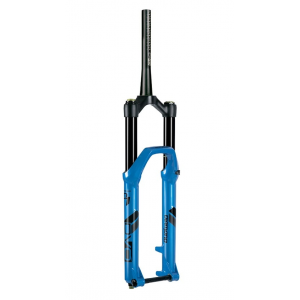
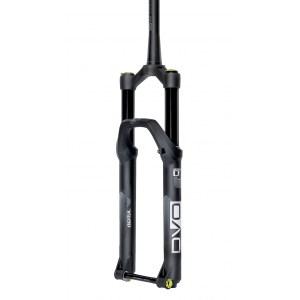
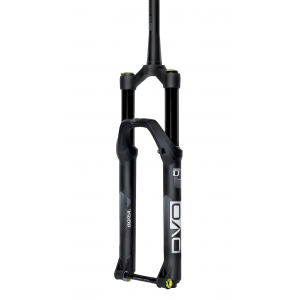
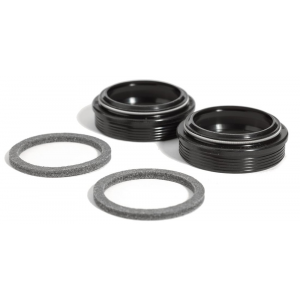


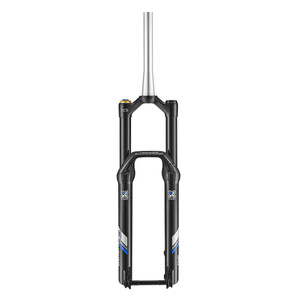


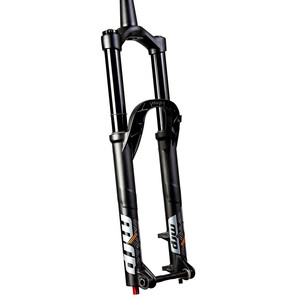

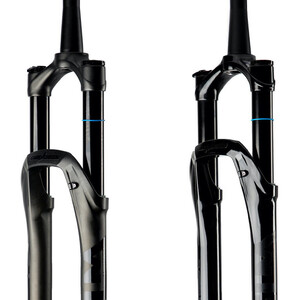
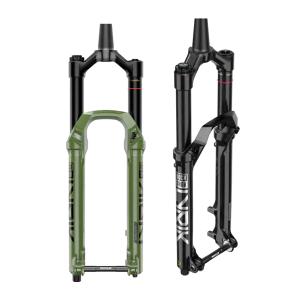
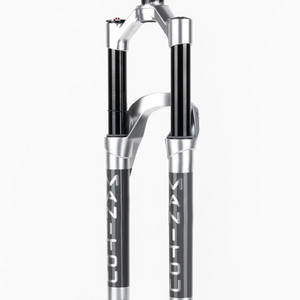






12 comments
Post a reply to: Tested: DVO Suspension Diamond Fork